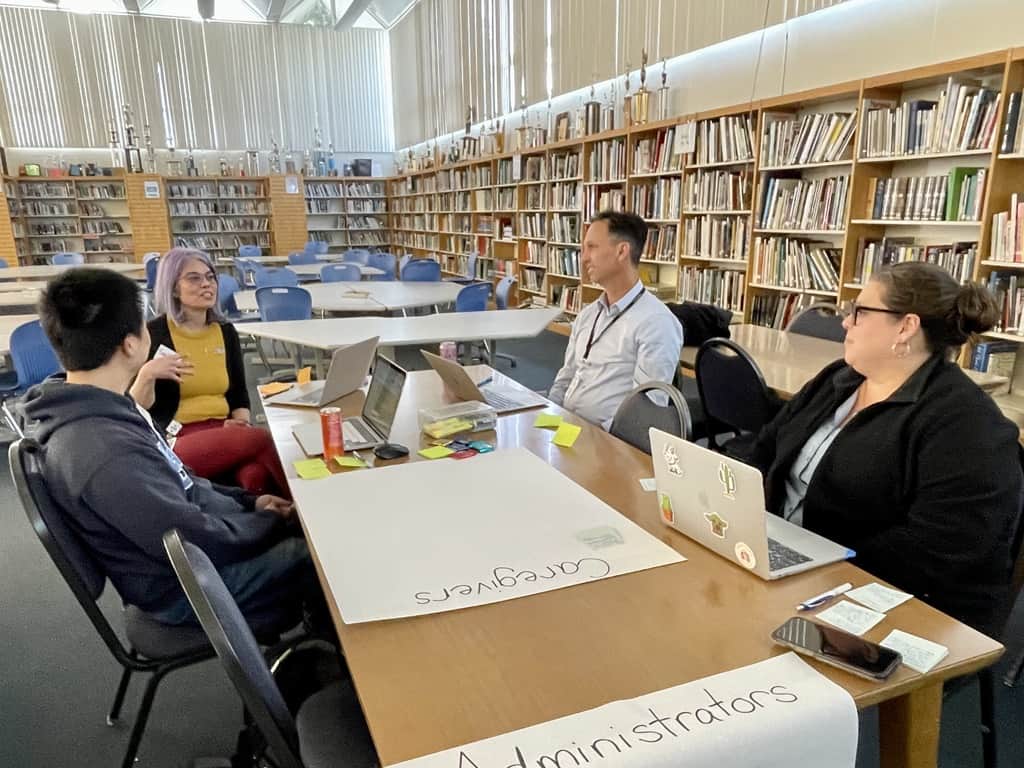As we shared in our previous post, our design work for the Landscape Analysis resource was done in partnership with a team of consultants from across the country, as well as our friends at the English Learners Success Forum (ELSF). We knew it was essential to partner with ELSF due to their deep expertise in the unique needs and experiences of multilingual learners; we knew they would bring a perspective to our design work that was deeply rooted in an evidence base that could supplement our team’s knowledge at Student Achievement Partners (SAP).
Partnering with ELSF was a true joy on our end, but we wanted to hear about their experience in the work. So, we connected with Joanna Yip, ELSF’s Director of State & District Engagements, to hear more about her perspective around the development of the Landscape Analysis.
Why were you interested in working together to develop this resource? What prompted you to be involved in developing this resource?
At the English Learners Success Forum, we’ve been concerned about the fact that Multilingual Learners are treated as an afterthought in curriculum adoptions. Too often, districts select instructional materials without careful consideration of whether materials are well-suited to support the needs of their specific Multilingual Learners. When that happens, teachers are left in the dark, ill-equipped to implement newly adopted materials. They need substantial training and professional development to know how to implement materials in culturally and linguistically responsive ways. We felt there needed to be guidance for the field on what educators should do to be more inclusive of Multilingual Learners in curriculum adoptions. It’s one way that our school systems can be designed with equity in mind and at the forefront.
We first created a set of powerful tools called the Mathematics and ELA Benchmarks of Quality that name the critical design features of core content materials necessary to effectively address the assets and needs of Multilingual Learners. When purchasing ELA and math instructional materials, state, district, and school leaders must consider ALL students and a number of priority criteria. They often have a materials review framework that they start with that includes standards alignment, usability, and instructional practices for content instruction. However, these tools rarely address curriculum and instruction for Multilingual Learners specifically. As a result, states and districts do not know what to look for when they are reviewing instructional materials to assess their quality for Multilingual Learners. We created the Benchmarks so that educators would have a clear set of indicators that are grounded in research-based practices to support Multilingual Learners in core content learning. With these criteria, adoption committees are better set up to know how to review instructional materials.
Yet, even with a set of inclusive criteria for materials, districts and schools need additional guidance on how to incorporate Multilingual Learners in their adoption process. Too often, Multilingual Learner-specific criteria are not included in district priorities, and educators are not even sure what kind of criteria to include in their selection process. District leaders are not equipped to train their adoption committees to develop curriculum literacy and select high-quality instructional materials for Multilingual Learners specifically. We know district leaders also want guidance on how to include English language development (ELD) experts and multilingual stakeholders in the process.
With the current state, we felt it was important to partner with SAP to create a resource that could support districts to answer some of these questions.
How do you think the Landscape Analysis process will support district leaders?
From our vantage point, the most important role the Landscape Analysis process plays is to encourage district leaders to collaborate and communicate when planning their curriculum adoption so that Multilingual Learners are not an afterthought. The process promotes the idea that ELD and content professionals need to work together to establish a strong and research-based instructional vision for Multilingual Learners. When such collaboration exists, other systematic barriers can be removed.
The process will also ensure that curriculum adoptions are rigorous, that adoptions are intentional and equitable, and that districts ultimately select materials to serve all students without leaving Multilingual Learners out of the discussion. The Landscape Analysis process articulates a vision for what an inclusive adoption process would look like. It provides a roadmap for districts to collaborate and redesign their adoptions to be more inclusive of Multilingual Learners.
The process also supports district leaders to demystify some of the ongoing questions related to instructional materials for Multilingual Learners. States and districts perceive that most instructional materials lack support for students who are learning English or for linguistically diverse students (see ELSF national report). Educators want to better understand how instructional materials can support their particular demographic of students before they purchase materials, but they do not always have tools that help them to do this. The Landscape Analysis process enables districts to better understand the challenges related to adopting and implementing materials for Multilingual Learners. As a result, districts can also improve their professional learning and ensure that the adoption process is not only for the purpose of selecting programs but also is the beginning of the professional learning process for implementing new materials.
What is your hope for the tool? What impact do you hope this resource would have in the field?
Ultimately, we hope that all curriculum adoptions consider the needs of all students, especially those who have been historically underserved by their school systems. To this end, we hope that the Landscape Analysis tool gives districts both a vision for what a strong and inclusive adoption process entails and some insights into how to adjust current processes to be more inclusive. We hope the tool, when used by collaborative teams of educators that unite ELD and content teachers and leaders to work together, will increase coordination and collaboration so that Multilingual Learner supports are integrated into core content instruction as opposed to staying on the margins. We hope that districts and schools will have a sense of where they will need to change existing actions and behaviors in order to more equitably address and respond to the needs of Multilingual Learners in curriculum materials. We also hope that an inclusive adoption process with a language focus for Multilingual Learners will ensure a more effective launch of new materials, and subsequent, ongoing professional learning to meet the needs of Multilingual Learners.



















